Nona Inescu’s solo show at EXILE gallery in Berlin (organized in collaboration with Sabot Gallery Cluj-Napoca) is not her first attempt at communing with the inhuman. First there is her work with plants, ranging from documenting the traces left by caterpillars on leaves (Drawings from caterpillars, 2015) to her Compendium of spontaneous vegetation (2015), documenting plants sprouting from concrete in various urban settings. Actors and systems of nature observed in their interactions, but untampered with. Turning to stones is taking another step away from humanity, down the Aristotelian scale. Here we can cite Conversation with a stone at SpazioA (Pistoia), as well as her installation Where touch begins, we are at ODD (Bucharest), both from 2016. Showcased in the former were stones embraced by the artist’s trademark flat hands as well as pebbles bearing fingerprints, while in the latter the stones, arranged in a semicircle around a screen, were equipped with touch sensors.
In the exhibition at EXILE, titled Lithosomes, the human element takes its hands off, so to speak (except, tauntingly enough, for the exhibition’s title work), but that’s not to say it is less present. This time, the discourse becomes more complex, partly because of its explicit focus on stones, but also not least due to Ion Dumitrescu’s text, titled Overcoming becoming. A litho-spleen. Curatorial text would maybe be an improper term, since it wasn’t written by the curator (Nona Inescu did the set-up herself, so there is no mention of any curator or curatorialness), nor does it perform the standard function of textual mediation, bridging a gap between the general audience and artworks refusing to speak, which need to be revealed (apart from the part where he explains what a concretion is), or that of imbuing with meaning (or at least with bibliography) and conceptually tying together a series of disparate works, like in a lot of larger curatorial initiatives. In other words, we lack the traces of a curatorial intelligence constructing meaning from raw material from somewhere outside. Ion Dumitrescu’s bibliography is solid and up to date, but his text is not art criticism either. Rather, it reads more as a series of theoretical musings, succeeding but not necessarily stacking upon one another towards a clear end, where contemporary ecocriticism/eco-theory is internalized, becomes visceral. What results is an aesthetic, subjective, automatic discourse, not aiming to forward the production of knowledge (though for Noah Roderick, a reference the author is acquainted with, intuition and aesthetics are precisely the starting point of future knowledge). Towards the end some of the works exhibited are mentioned. The text touches (upon) the works, but does not envelop them, does not attempt to dominate. The textual voice is as alienated contemplating a dense body of theory and the works in the show, as a hypothetical human is contemplating a hyperobject.
But let’s not get carried away by the stones-in-themselves. As the artist states, the idea with the exhibition is to build analogies between stones and human bodies. Their odd shapes, smooth and with equally round “growths”, give them an organic appearance. “In the villages [in Romania] where you can find them, people think they’re dinosaur eggs, or alien stones because of the shapes”, states the artist, and stones indeed have a long history of being perceived as somehow invested with magical (but not rationally directed) powers that can affect humans. Even though the text states that “symbiosis is not possible” (between humans and stones), our integration into a single system is inevitable – just not on our terms.
In Wisława Szymborska’s poem Conversation with a stone (which gave the title to one of the exhibitions mentioned in the beginning), a human voice asks a stone to let it in, while the stone, though it replies, remains closed. The 3D animation Untitled (Formation), as if illustrating the lines “even if you break me to pieces, / we’ll all still be closed”, shows a stone-like shape, constructed out of numerous similar but smaller shapes, morphing, merging and seceding from another, acting at once as an inside of a larger structure and itself as a container for one, while paragraphs from Jerome Jeffrey Cohen’s Stone. An Ecology of the Inhuman are read in the background.
So, even though bibliographical references run amok, the purpose is not to take theory further, nor to look for the nearest political application, but rather to act theory out, to test its practical consequences, the subjective worldviews it proposes. Discourse frolics in a playground opened by theory. An alien playground, perhaps like Litho/Gym, tailored to the stones’ shapes, humanly constructed for non-human actors.
To quote from Dumitrescu’s text, “concretions are swinging in an SM installation”. I was debating whether my initial association of all the harnesses and chains that make up the contraption in which the stones lie with sexual domination was forced or not (see also the caged and leashed Introvert II – notably, the shape of a similar cage in Introvert I, not present in the exhibition, is the shape of a human head). This was because I couldn’t grasp how this new layer of meaning integrated into an exhibition that seemed to be, as the other works seemed to pretty consistently express, about the impossibility of communicating with our inhuman other. The artist rests upon various large stones, molds her body on their already odd shapes (Concretions (Geophilia) series), even seeming to have found a way in in Concretions (Geophilia II). We however know there are temporal barriers that keep us out. Communication truly isn’t possible. Is Inescu punishing the stones in the installation? Are the stones doing it to themselves? Are they enjoying it? Or is asking such questions like talking to a stone and actually expecting a reply? The artist sees in the hanging and trapped stones a submissiveness divorced from sexuality. Because of course they themselves can’t be actors of desire. Once we accept our irreconcilable positions, we are free to stage playful mock-interactions. To see it as a manifestation of the artist’s personal desires or of a more general human drive to return to the pre-symbolic would be to overinterpret and to overemphasize the human, while to just speculate about stones would be needlessly self-alienating.
Stones were always objects of fascination, and we could easily imagine concretions being incorporated into artworks at some various points in time. Still, without the theoretical context it’s doubtful the associations would have opened up so much space for discourse (e.g.).
In the Anthropocene, when the challenges of developing a politics of the inhuman, starting from nebulous problems of ontology and trickling down to concrete political action, the exhibition’s implicit stand is to allow the inhuman opacity (to reapply a concept from Glissant) rather than to emphasize the necessity of constructing it as a political subject ourselves. So what does that mean for art practice? We have seen a playfully-assumed human point of view. I eagerly await to see how praxis will be developed from here. Do we further alienate ourselves from that which travels at speeds too great or too slow (e.g. stones) to be intelligible to us? Would that further the feeling of melancholy that Dumitrescu’s text speaks of? Or will we take the already bibliographically-paved path of inhuman horror?
Nona Inescu, Lithosomes, is at EXILE gallery in Berlin between October 21 – December 2, 2017.
POSTED BY
Rareș Grozea
Rareș Grozea (born 1995) got his B.A. in Art History from the University of Bucharest and is currently studying for a Master's in Berlin....


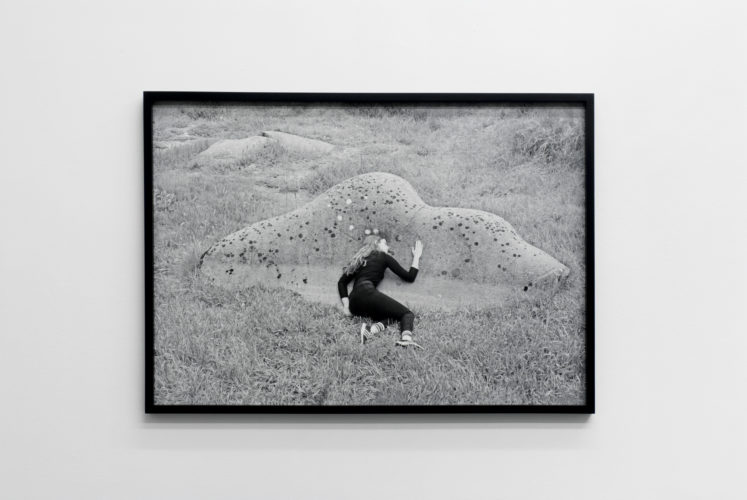
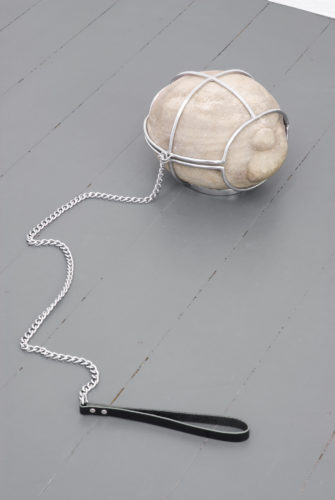
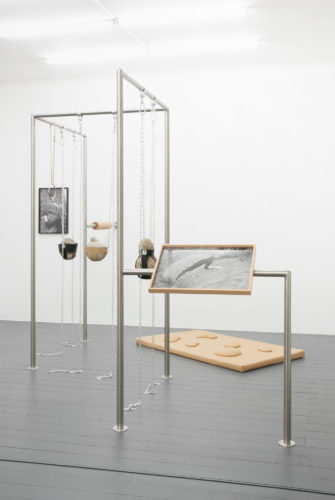
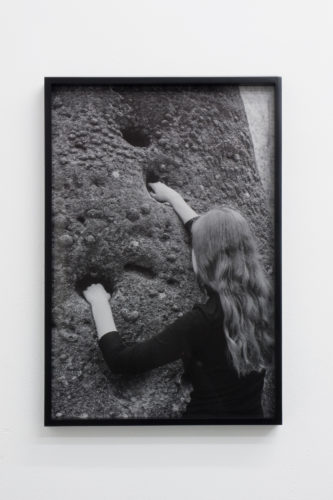
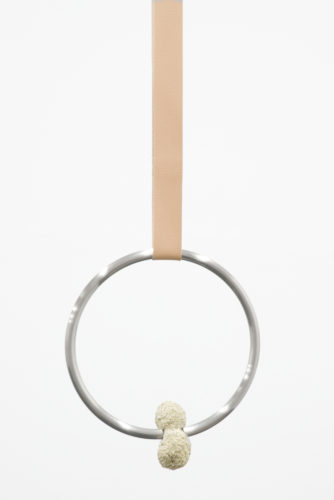
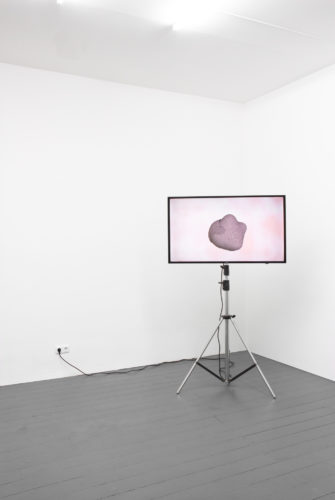
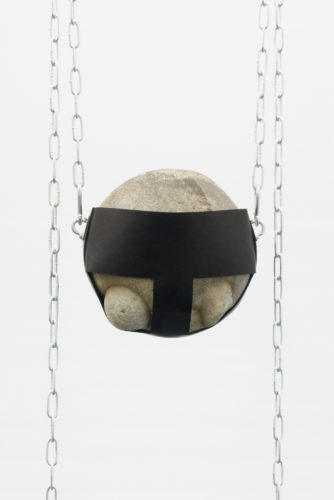

Comments are closed here.